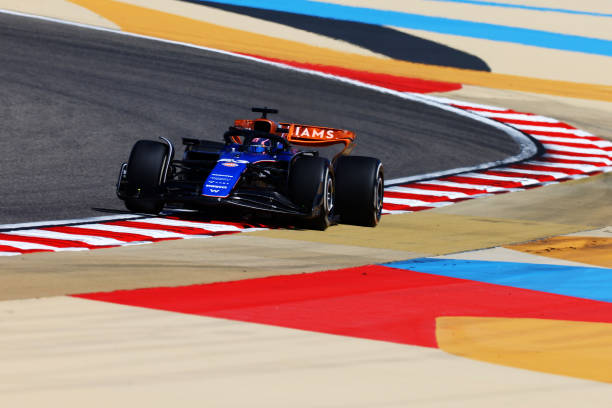Mercedes has introduced significant changes to its new W15 challenger, particularly in its rear suspension layout, opting for a push-rod configuration.
This move follows the successful adoption of the push-rod setup by rivals Red Bull and McLaren during the ground effect era.
The rationale behind this configuration lies in its aerodynamic benefits, enabling a more streamlined gearbox and facilitating smoother airflow beneath the car, ultimately enhancing performance, especially in relation to the rear wing.
Anticipated to be implemented across all Mercedes-powered teams, including Aston Martin and Williams, for the 2024 season, the transition to the push-rod layout was not universal.
Aston Martin embraced the new components, aligning with Mercedes’ strategy. However, Williams made a deliberate choice to stick with the 2023 parts, retaining the pull-rod layout and last year’s gearbox.

This decision, made in collaboration between Williams and Mercedes several months prior, was influenced by various factors beneficial to both parties. For Mercedes, the logistical complexity of supplying two customer teams with entirely new gearbox and rear suspension layouts posed a significant challenge.
Conversely, for Williams, the utilization of the previous year’s components falls within the constraints of the cost cap regulations, freeing up resources to bolster other areas of the car for performance gains.
James Vowles, Williams’ team principal, emphasized during the season launch that the choice of gearbox holds less significance in influencing the team’s performance for 2024.
Acknowledging the reliability and familiarity of the Mercedes gearbox, Vowles stressed its role as a stable foundation rather than a decisive performance factor. He noted that while the gearbox influences certain aspects such as rear positioning and fuel cell placement, its impact on overall performance has diminished over time.
Vowles hinted at forthcoming revelations about Williams’ rear suspension setup, teasing intriguing developments to be unveiled during the Bahrain Grand Prix, underscoring the team’s ongoing pursuit of performance enhancements.

